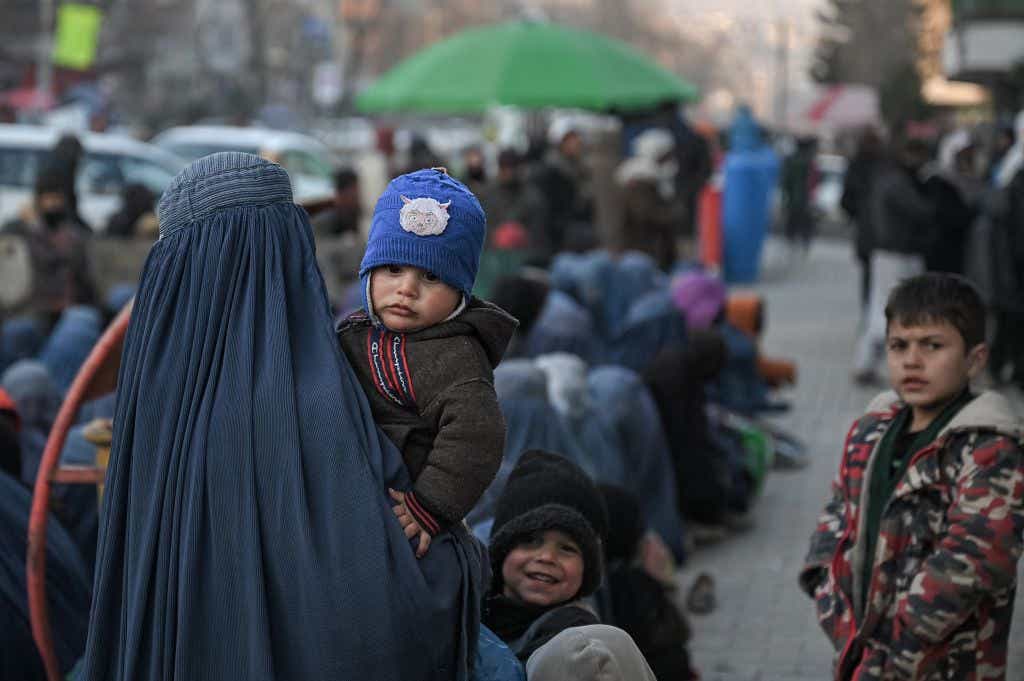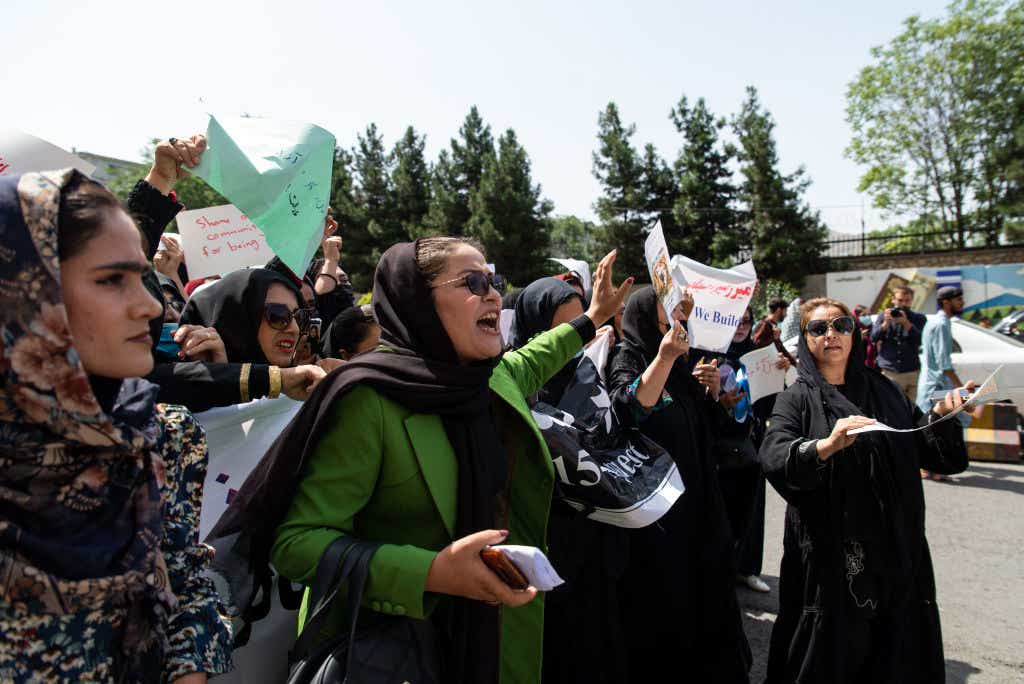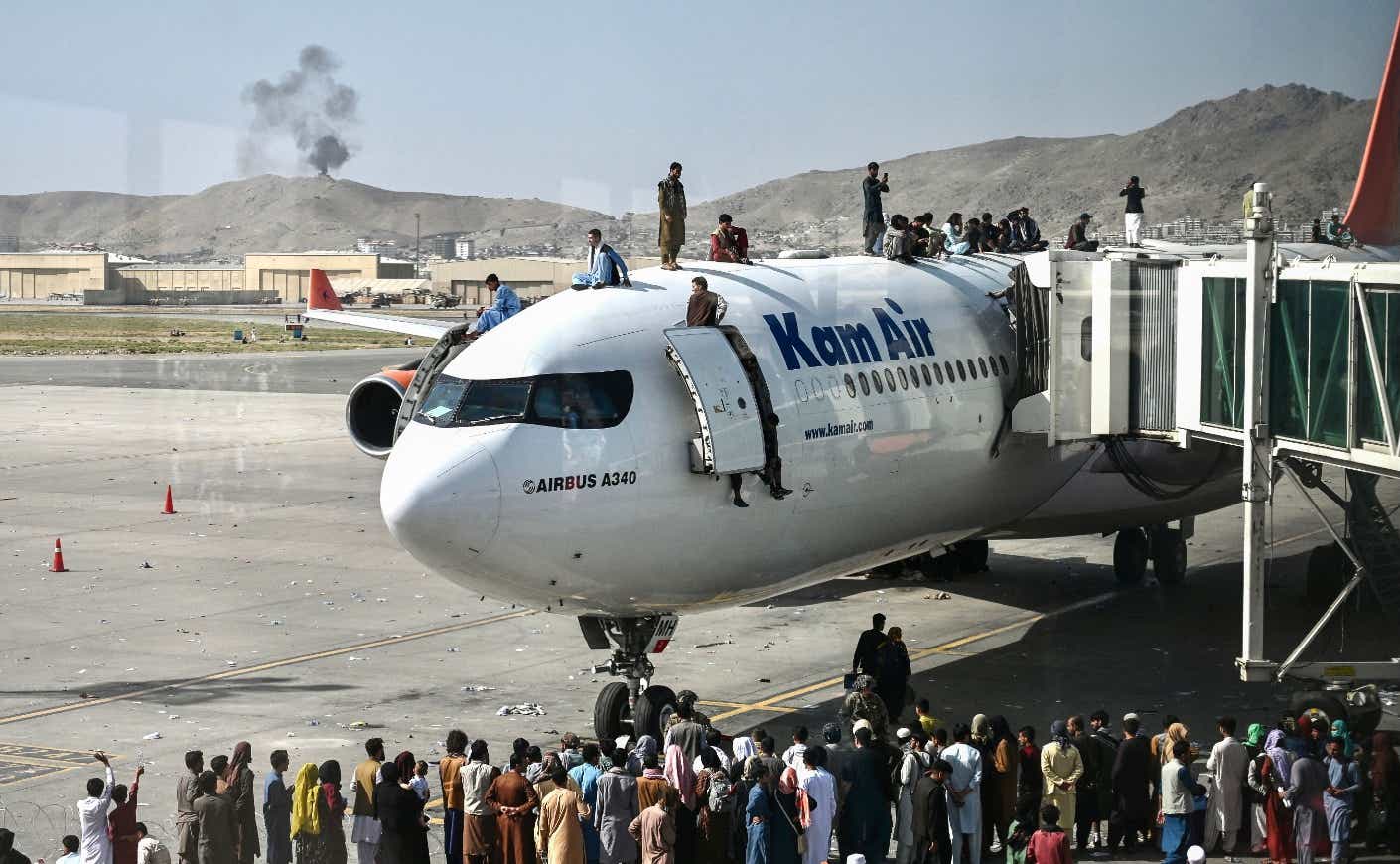It’s hard to believe that it has already been a year since the Taliban swept Afghanistan and regained control, but for many ordinary citizens left behind, the harsh realities have already set in.
On Aug. 15, 2021, just two weeks after the withdrawal of American troops from the country was complete, the Islamic fundamentalist group captured the capital city of Kabul with very little pushback. Even though tens of thousands of Afghans were evacuated by the U.S., others weren’t lucky enough to escape the brutal regime’s return to power, and millions are now on the brink of starvation.
“The current crisis will kill far more Afghans than the past 20 years of war,” says Chiara Trincia, a global communications officer for the humanitarian group, the International Rescue Committee (IRC).
Afghanistan’s economy essentially collapsed overnight last year when foreign aid was cut off last year, and now, more than half a million people have lost or were forced out of their jobs, according to the UN International Labour Organization. Without money or resources, the IRC tells us that over half of the population — or 24 million Afghans — are facing acute hunger, and nearly 6 million are facing “extreme, famine-like conditions.”
“For two decades, Afghanistan has heavily relied on foreign aid, much of which has been suspended or frozen over the last year — significantly impacting the welfare of Afghans across the country,” Trincia tells KCM. “The reduction in development aid, combined with the freezing of Afghanistan’s foreign reserves and the collapse of the banking sector have produced a perfect storm.”
As a result, humanitarian groups like IRC say Afghans are fighting to survive, skipping meals and picking food out of the trash, or taking on mounting debt. Some have had to take even more extreme courses of action, like selling their organs just to pay for food.

While the increasingly critical situation impacts everyone, it’s especially hurting women and children. Some families are selling their sons and daughters to provide for their families, but even if there is food on the table, Trincia says women are usually the last ones to eat. Meanwhile, reporters and humanitarian workers on the ground have painted a tragic scene of maternity hospitals packed with severely malnourished babies — as many as two to three per bed, with several children still waiting to get in.
What’s worse is that these conditions aren’t expected to improve without some serious interventions. The U.N. Development Program estimates that 97 percent of Afghanistan’s population will be living well below the poverty line by mid-2022, and up to 1 million children under 5 could die by the end of the year.
This crisis builds on an already impoverished situation, made worse by two decades of war, drought, and inflation. But the Biden administration’s decision last year to freeze more than $9.5 billion in assets to prevent funds from getting into Taliban hands has pushed Afghanistan’s economy to the edge of financial ruin. For instance, the U.N. currently has about $135 million in aid, but the money remains out of reach because the Taliban-run central bank can’t convert it to afghani, the country’s currency.
At the urging of the U.N., the Agency for International Development announced in January that it was donating more than $308 million in assistance for Afghans, bringing total aid to nearly $782 million. But Trincia says the humanitarian response in Afghanistan remains “drastically underfunded, standing at 44 percent of the required amount to reach those in need.” She adds that the country not only needs “a humanitarian lifeline,” but also “international institutions to provide technical support to the banking sector to help it get back on its feet.”
Another important element is addressing the crackdown on Afghan women: Trincia estimates the ban on women working has led to $1 billion in losses — or about 5 percent of Afghanistan’s GDP. Many women aren’t even allowed to travel without a male guardian, effectively confining them to their homes, and in households where they’re the sole breadwinner, food insecurity is nearly 100 percent.

Despite these setbacks in human rights, Trincia says that 40 percent of IRC’s staff is comprised of women. To put this into perspective, 99 percent are Afghan civilians who work in some of the most remote parts of the country.
“The role of women in Afghan society is at risk of shrinking as the authorities continue to issue edicts impacting their access to work, education, and their freedom of movement,” Trincia says. “Women are vital to the delivery of humanitarian assistance, education and healthcare services.”









